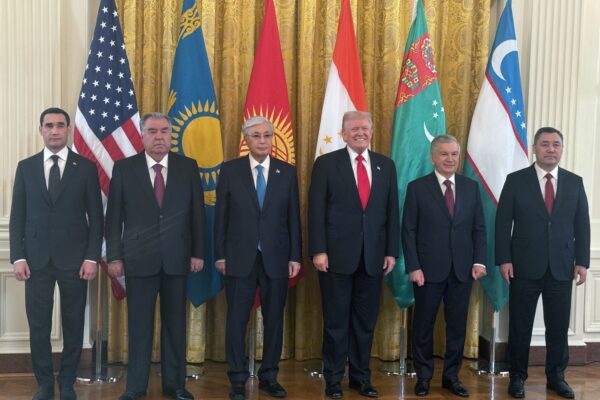The Trump administration’s transactional style was on fully display, with savvy Central Asian businessmen just as keen to get in on a deal.
Other than the Central Asian flags flying over the entrances to some of Washington D.C.’s fanciest downtown hotels, and greater-than-usual numbers of men in dark suits gathered, chatting in Uzbek, Russian or Kazakh, outside them, your average Washingtonian would have had little idea that on November 6 – for the first time ever – all five Central Asian presidents were being welcomed to the White House.
But amid an increasingly acrimonious government shutdown, U.S. President Donald Trump welcomed the leaders of Kazakhstan, Kyrgyzstan, Tajikistan, Turkmenistan, and Uzbekistan individually to the Oval Office – and gathered with them for a 7 p.m. dinner in the East Room (not to be confused with the White House’s recently demolished East Wing).
The landmark event stirred up genuine excitement among those in Washington who work on and with Central Asia, and among Central Asians long desirous of the faraway capital’s attention. The summit’s excessive focus on dealmaking made headlines, with particular emphasis on critical minerals and airplane purchases.
The C5+1 is a little-noticed format but it has shaped U.S. policy toward Central Asia for a decade now. Bringing together the five Central Asian states and the United States, the format has seen consistent, though not always prominent, engagement, which deepened in the wake of the 2020 COVID-19 pandemic and again following the 2022 Russian invasion of Ukraine. Since 2015, the foreign ministers of the six countries have met almost annually, typically on the sidelines of the U.N. General Assembly. In 2022 a secretariat was established, a maturation of the format.
In 2023, then-U.S. President Joe Biden hosted the first-ever C5+1 Leaders Meeting, also in New York amid the hustle and bustle of UNGA.
As always, context is important. And it’s multilayered.
There’s the international context to consider: Plans for a U.S. withdrawal from Afghanistan, which eventuated in August 2021, triggered a kind of soul-searching for U.S. Central Asia policy. Russia’s 2022 full-scale invasion of Ukraine has had myriad, and complex, effects on Central Asia; it has also reframed the region’s importance in U.S. eyes. Similarly, China’s all-consuming domination of critical mineral supply chains – and the strategic risks that present for the United States – motivated the launching in 2022 of the Minerals Security Partnership (MSP), in which Kazakhstan and Uzbe
Continue Reading on The Diplomat
This preview shows approximately 15% of the article. Read the full story on the publisher's website to support quality journalism.
